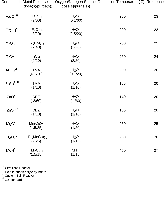Atomic layer deposition of 2D and 3D standards for synchrotron-based quantitative composition and structure analysis methods
- Illinois Inst. of Technology, Chicago, IL (United States). Physics Dept.
- Lawrence Berkeley National Lab. (LBNL), Berkeley, CA (United States)
- European Synchrotron Radiation Facility (ESRF), Grenoble (France)
- Univ. of Chicago, Argonne, IL (United States). GSECARS
- Argonne National Lab. (ANL), Argonne, IL (United States). X-Ray Science Dept. Advanced Photon Source
- Argonne National Lab. (ANL), Argonne, IL (United States). Material Science Division
- Alternative Energies and Atomic Energy Commission (CEA), Saclay (France)
Atomic layer deposition (ALD) is a scalable deposition technique known for producing uniform, conformal films of a wide range of compounds on nearly any substrate material. These traits make it an ideal deposition method for producing films to replace the National Institute of Standards and Technology (NIST) standards and create Standard Reference Materials (SRMs) on a wide range of relevant two-dimensional and three-dimensional substrates. The use of SRM from NIST for quantitative analysis of chemical composition using synchrotron based x-ray fluorescence (SR-XRF) and scanning transmission x-ray microscopy (STXM) is common. Such standards, however, can suffer from inhomogeneity in chemical composition and thickness and often require further calculations, based on sample mounting and detector geometry, to obtain quantitative results. These inhomogeneities negatively impact the reproducibility of the measurements and the quantitative measure itself. Utilizing Rutherford backscattering, x-ray reflectivity, quartz crystal microbalance, STXM, and SR-XRF, the authors show here that ALD is capable of producing high quality standards that are homogenous over scales ranging from nanometers to 100s of micrometers.
- Research Organization:
- Lawrence Berkeley National Lab. (LBNL), Berkeley, CA (United States); Argonne National Lab. (ANL), Argonne, IL (United States); Univ. of Chicago, Argonne, IL (United States)
- Sponsoring Organization:
- USDOE Office of Science (SC), High Energy Physics (HEP); USDOE Office of Science (SC), Basic Energy Sciences (BES); National Science Foundation (NSF)
- Grant/Contract Number:
- AC02-05CH11231; AC02-06CH11357; FG02-94ER14466; EAR-1634415
- OSTI ID:
- 1493253
- Alternate ID(s):
- OSTI ID: 1422434
- Journal Information:
- Journal of Vacuum Science and Technology. A, Vacuum, Surfaces and Films, Vol. 36, Issue 2; ISSN 0734-2101
- Publisher:
- American Vacuum SocietyCopyright Statement
- Country of Publication:
- United States
- Language:
- English
Web of Science
Similar Records
New Homogeneous Standards by Atomic Layer Deposition for Synchrotron X-ray Fluorescence and Absorption Spectroscopies.
SOEC efficiency and cost improvement Part 1 and 2.







